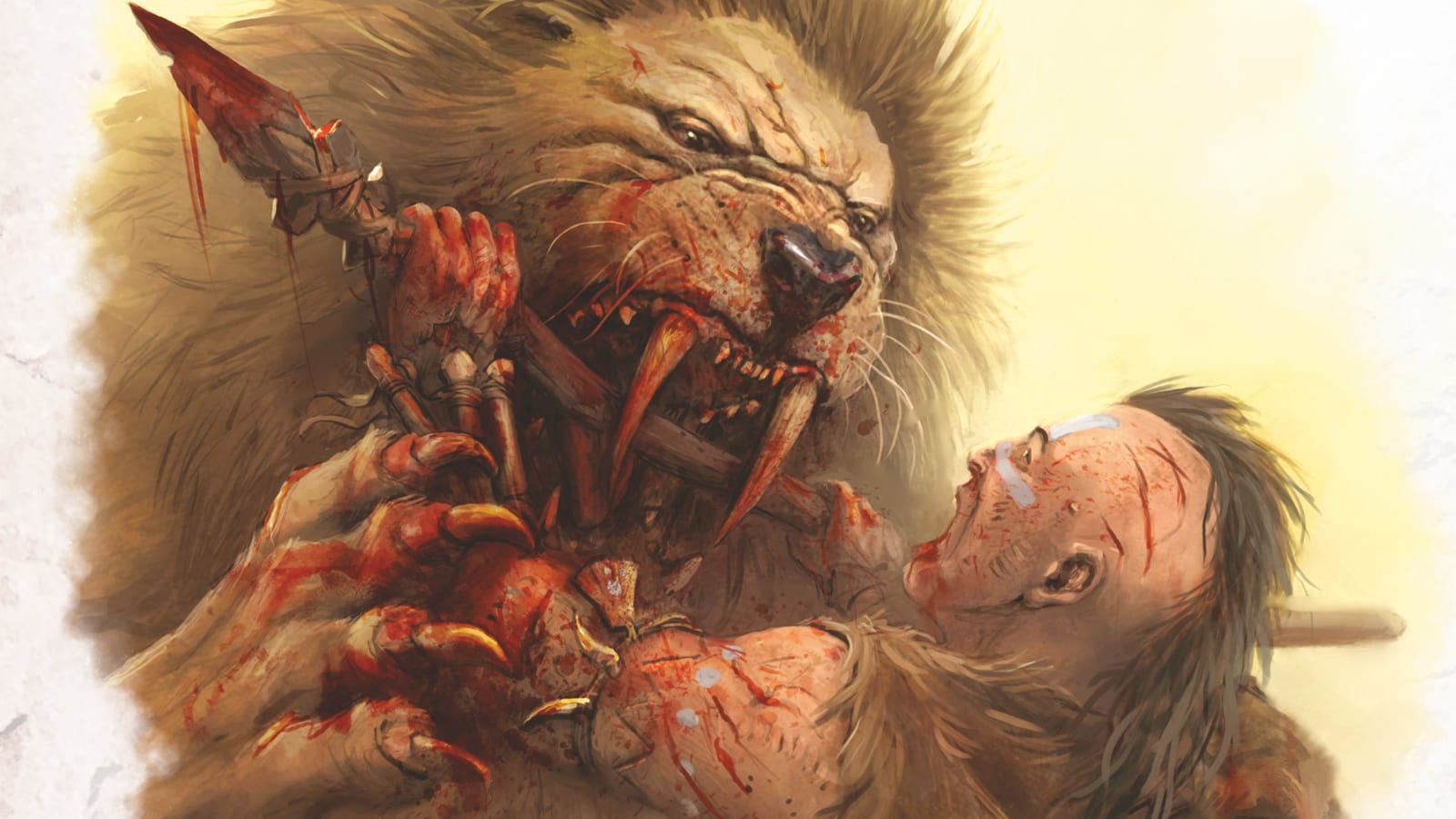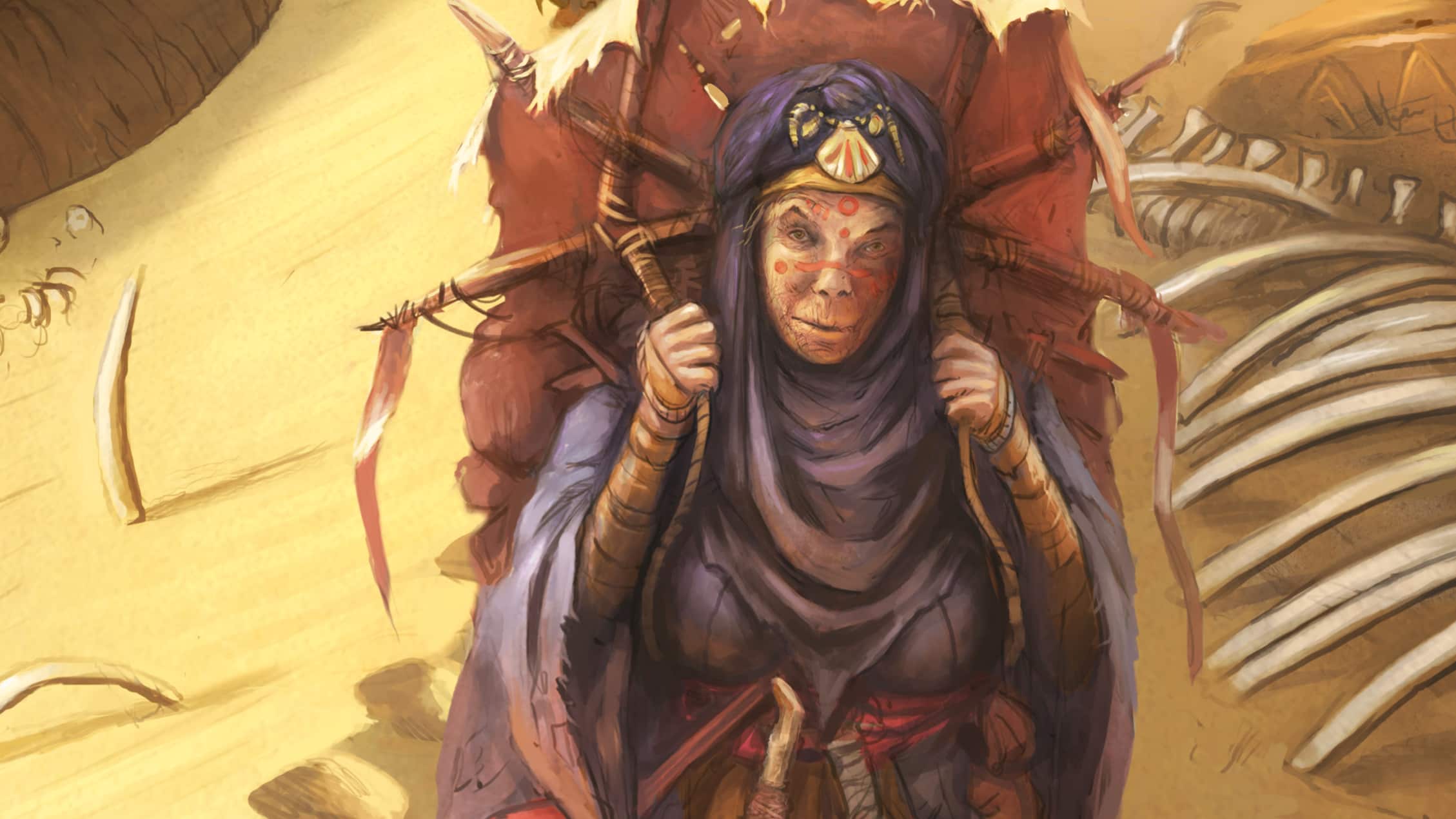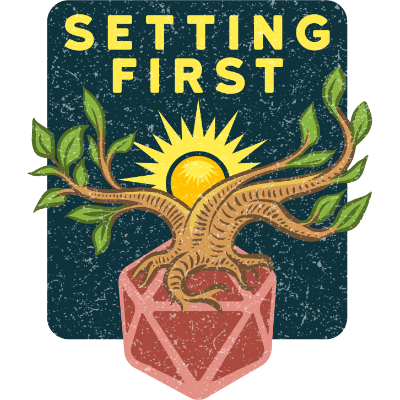
Paleomythic combines tight, elegant mechanics, clever character differentiation, and just enough but not too much worldbuilding.
TL;DR
Paleomythic is an absolute gem of a game. Characters in Paleomythic fight other tribes, take on dangerous creatures, explore forbidden ruins, face spirits and other magic, and help their tribe survive the vagaries of life in the world of Mu. The simple, elegant mechanics map well to the alt-Paleolithic setting; magic is woven into the fabric of the world, combat is interesting without being a slog, and the limits of material technology really matter. I came to it figuring it might be good for a one-shot, and by the time I finished reading it I had a half-dozen adventure ideas. Now that we’ve played our first session, my players and I can’t wait to continue our adventures in the land of Mu.
(Added 2024-06-15: After eight sessions of play, I created a review video which goes into more detail than what this post provides.)
Getting to No
In sales there’s this concept called “getting to no”. The idea is that if whatever you’re selling just isn’t a good fit for the person you’re talking to, it’s better to find out right away, instead of wasting your time and theirs. With that in mind, even though I’m not trying to sell you on this game, before I tell you all the reasons I love Paleomythic, you should know a few things.
If you want to run campaigns in which characters can become all-seeing, all-destroying vanquishers of all who dare face them, or if you want magic that will rend the fabric of time and space, this ain’t the place for it. If you want every character and creature to be highly-differentiated with extensive special abilities, again you’ll be disappointed. Likewise, if you’re looking for a meticulously-detailed game world, you’ll find Paleomythic wanting. Finally if, you want metacurrency to influence the flow of events and adjust outcomes, the game doesn’t provide any.
One more thing: If you enjoy lots of different dice, you’ll find this game lacking. This is all about the d6, baby.
Yes, Please
Paleomythic sits in the Goldilocks Zone. It is gritty without being too granular. Magic permeates Mu in a way that feels organic and unforced. It’s a truly dangerous world in which PCs can die, but it’s also not a game where one failed spot roll gets you killed. If you’re into small-scale heroics and clever use (and repair!) of resources, you’ll dig Paleomythic.
Character building really surprised me. At first blush Paleomythic looks like, well, people running around throwing spears at each other. What else is there? Well, actually there are several ways to differentiate characters without getting bogged down in hard-to-remember details. This isn’t a zero-to-hero game; characters in Paleomythic begin competent and become more competent (but not unbeatable) over time.

The Mechanics
Many years ago the success with a complication mechanic in Apocalypse World blew my mind. A few years later the cinematic results generated by FFG’s Star Wars dice had a similar effect. The elegance of Paleomythic’s mechanics are similarly eye-opening. They’re also a perfect fit for the setting.
In brief, a character in Paleomythic has a number of Traits, which are natural characteristics like Brave, Guileful, or Wise. There are twelve of them, but a starting character may have up to five. They can also take up to two Flaws (such as Oblivious or Weak), each of which provides access to another Trait. Every task in Paleomythic is associated with a particular Trait.
Want to sway the envoy from a neighboring tribe? That’s a Charismatic roll. If you don’t have the Charismatic Trait, you can still make the roll. If you have the opposite of Charismatic, which is the Flaw Unassuming, you have to use one less die. But if you do have Charismatic, you get an additional die.
The base number of dice to roll is determined by your Current Traits count. So to sway the envoy if you have Brave, Guileful, Wise, and Charismatic as your Current Traits, that’s four dice, plus an additional die because you have Charismatic. All you need to do is roll a single 6 to succeed.
In addition to Traits, every character starts with from one to three Talents. It’s tempting to think of them as classes, but they really are more like capabilities rather than professions. There are 36 Talents, which is about 30 more than I would have expected. And they’re all cool in their own way. Like Soothsayer, which gives a character the ability to cause disquiet and dread in others, with mechanical effects in and out of combat. Or Cave Painter, which provides the summoning of a spirit that can follow a single command on a successful Dextrous test.
You can easily create a really combat-focused character by choosing Berserker and Warrior, for example, or you can make a truly unique character by combining Talents like Crafter and Thief. Every Talent you choose reduces the number of Traits you can have on character creation, so if you select three Talents, unless you take one or more Flaws, you’re limited to three Traits. This balance is very important because the total number of Current Traits functions as your wound threshold.
Every Wound reduces your Current Traits by one and you must put an X by the Trait of your choosing, which can no longer be used. Your dice pool for tests is also reduced for each Wound. If your character reaches zero Wounds they are barely conscious, and if they go negative, the character is dead.
This is a marvelously elegant way to tie task resolution and wound capacity neatly together. There’s no need for task resolution modifiers as your character takes Wounds—they just become less capable in all tests, and lose specific special abilities. You can imagine how combat in this game will tend toward ambushes and skirmishes, because taking the first hit, particularly if it’s for more than one Wound, really has an effect.
Most weapons cause one Wound, but certain Traits can give a character the ability to make a second attack or inflict an additional Wound. There are also several tactical moves that can be employed to keep an opponent at bay, gain an advantage, make a chancy but deadly attack, or even steal your opponent’s weapon (this happened in our session and was one of the highlights of the evening). Weapons also have specific but mechanically straightforward effects.
This simplicity also manifests in how tools operate in the game, which is one of my favorite things about Paleomythic. Whenever you use the right tool for a job (and weapons count as tools), you add a die to the roll. But if on that added die you roll a 1, the tool breaks. So you could land a righteous blow on a bear, damaging the huge creature, and break your axe in the process. Not good. Similarly, armor exists in Paleomythic, but it also breaks on impact and must be repaired or replaced.
This means that crafting is extremely important. It also is a built-in mission generator for GMs. The PCs just prevailed (barely) against that bear, but now they need to find the right materials to fix the broken axe. A character with the Crafter Talent will fix the axe without a roll, but anyone else may waste the material and still fail in the attempt.
A Quick Look at the Book
The World of Mu
Mu (thankfully prounounced “mew”) also occupies the Goldilocks Zone. The contours of life in Mu are provided, giving enterprising GMs a solid scaffolding to build on, but it’s also easy to modify without ruining the central conceit. Mu exists in an alternate Paleolithic era, in which magic permeates the land, dangerous creatures wait for the unwary, mysterious long-forgotten remnants left behind by ancient forbears are ripe for exploration, and of course rival tribes trade with and fight each other because that’s what humans do.
The Otherworld is important to the inhabitants of Mu. This spirit realm can be visited by those with the Shaman Talent and those they choose to bring with them. There spirits will be encountered and perhaps, if the visitors are lucky, they can find a Wraith who will give them hidden knowledge.
In Mu there are a wide variety of religious practices, social arrangements, and political structures, all tightly described in the book and ready for a GM to build out as they see fit. The wide variety of combinations available gives the GM a lot of latitude in creating their own intra- and inter-tribal alliances and tensions.
One-shots and Campaigns
This is absolutely a game that works for one-shots, but if you’re at all into fleshing out your own tailored-for-your-table version of the world of Mu, Paleomythic just begs for campaign play. We’ve just started our campaign, and I’ll publish a follow-on article here after we have a few more sessions under our belts, with info about how I set up my version of Mu and how the PCs and their Hearth People clan fare.
Get It!
You can pick up Paleomythic in print and PDF from Osprey Games, at finer hobby and game stores, or in PDF from DriveThru RPG.
Ω

